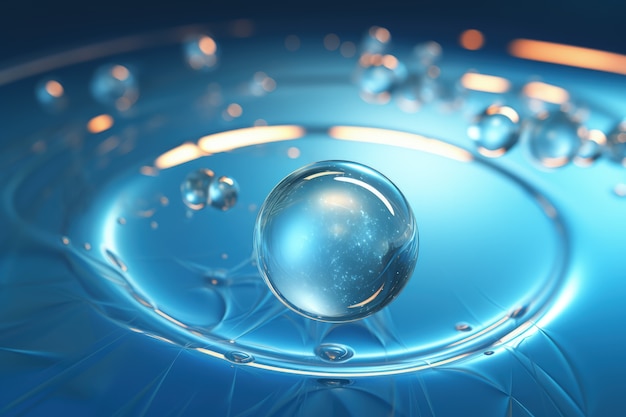Understanding Cellular Metabolism
Metabolism is the collection of chemical reactions that occur in your body. Essentially, it’s the sum of all the chemical changes happening within your cells. For instance, during digestion, cellular metabolism releases energy from nutrients. This process is crucial for sustaining life, allowing cells to grow, develop, repair damage, and respond to environmental changes.
Catabolic and Anabolic Metabolism
Cellular metabolism can either break down organic matter, known as catabolism, or produce substances, referred to as anabolism. For example, breaking down food so the nutrients can be used is a catabolic reaction, while the production of proteins from amino acids is an anabolic reaction. Generally, breaking down releases energy, and building up consumes energy. Amino acids, carbohydrates, and lipids (fats) are essential for life. Metabolic reactions either produce these molecules during the construction of cells and tissues or digest them to use as a source of energy.
Catabolic Cellular Metabolism
Catabolic metabolism breaks down complex organic molecules into simpler ones, releasing energy in the process. This type of reaction is known as exergonic. Catabolism reduces proteins, fats, and carbohydrates into amino acids, fatty acids, and simple sugars, respectively. The energy released from catabolic reactions drives anabolic reactions. This process occurs in three stages:
First, complex molecules are broken down into their basic building blocks. Then, these building blocks are further broken down into simpler metabolic intermediates. Finally, the acetyl groups of acetyl-coenzyme A are “combusted” by the citric acid cycle and oxidative phosphorylation to produce CO2 and H2O, releasing energy.
Anabolic Cellular Metabolism
In contrast, anabolic metabolism combines simple substances into more complex ones. When your cells combine amino acids into proteins to produce cells or tissues, that’s anabolism. Anabolic reactions are endergonic, meaning they consume more energy than they produce.
Although catabolism and anabolism occur independently, they are closely linked. Without cellular metabolism, the body’s cells wouldn’t be able to break down or synthesize the compounds needed for energy, growth, function, and healing.
The Role of Cells
Your body is made up of an incalculable number of cells, each with a specific purpose. Brain cells differ from blood cells, which differ from bone cells, and so on. Every cell in your body is uniquely suited for a specific function. Some cells send electrochemical messages to the brain, while others have different features and structural differences depending on their purpose.
Cell Composition
Although cell structures may vary, all cells share several basic traits. One common feature is organelles, which are like miniature organs within the cell that perform specialized functions. For example, mitochondria are organelles responsible for releasing energy. Other examples include the cell nucleus and endoplasmic reticulum.
Plasma Membrane
The plasma membrane encircles the cytoplasm and organelles of the cell, regulating what substances enter and exit the cell.
Cytoplasm
The cytoplasm is the jelly-like fluid that surrounds the nucleus and holds the organelles in suspension.
Cytoskeleton
The cytoskeleton is a network of long fibers that comprise the cell’s structural framework. It also acts like a rail system, helping organelles move to where they are needed.
Endoplasmic Reticulum
The endoplasmic reticulum (ER) is a folded maze of flattened sacs that envelop the nucleus. The ER has two components: the smooth ER and the rough ER. The rough ER assembles proteins, while the smooth ER detoxifies the cell of waste products and toxins, produces fats, and performs other important functions.
Golgi Apparatus
The Golgi apparatus accepts vesicles of cell-generated products from the ER and repacks them to be sent outside the cell. It is also responsible for creating lysosomes.
Lysosomes and Peroxisomes
Lysosomes and peroxisomes are the recycling centers of the cell, refashioning old, worn-out components.
Mitochondria
Mitochondria are the powerhouses of the cell, converting nutrients into energy. When mitochondria fail, energy production is impaired, affecting many important processes within the cell and the body as a whole. Inefficient mitochondria may result from poor nourishment, genetics, environmental toxins, or disease.
Nucleus
Nestled within the folds of the ER is the nucleus, the cell’s command center containing DNA, including noncoding telomeres that protect chromosomes. The cell will grow, mature, divide, or die based on the instructions it receives from the nucleus.
Ribosomes
Ribosomes interpret DNA information and create proteins.
How to Support Cellular Function
Cellular function directly affects how you feel. If your body is operating poorly at the cellular level, your overall well-being will be affected. Supporting cellular function is a “garbage in, garbage out” proposition. If your diet isn’t balanced and fails to provide essential nutrients, your cells aren’t getting the fuel they need. If your nutrient intake is incomplete or inconsistent, organic supplements can help fill the gaps.
Vitamin B12 is particularly important for supporting energy levels and metabolic function. Many people don’t get enough vitamin B12, and as a result, their energy levels suffer. If you feel chronically fatigued, you may benefit from adding a B12 supplement to your diet.
Vitamin D also supports normal cellular function. It’s difficult to get enough vitamin D from your diet, but with adequate skin exposure to sunlight (UVB rays), your body can produce vitamin D. Regular exercise can also boost your health and well-being in many ways, including improving cellular function. Staying hydrated and consuming plenty of clean, purified water is also crucial. Simply put, hydrated cells function better.
For extra support, consider our Ultimate Cellular Health supplement. It’s designed to protect mitochondria, facilitate cellular metabolism, sustain healthy cell cycles, and guard against DNA damage. This supplement contains some of the strongest antioxidants available, and one of its ingredients, BioPQQ, may protect DNA by supporting telomere structure. Supporting telomere integrity is one of the best ways to defend against the cellular aging that weakens cell metabolism.



